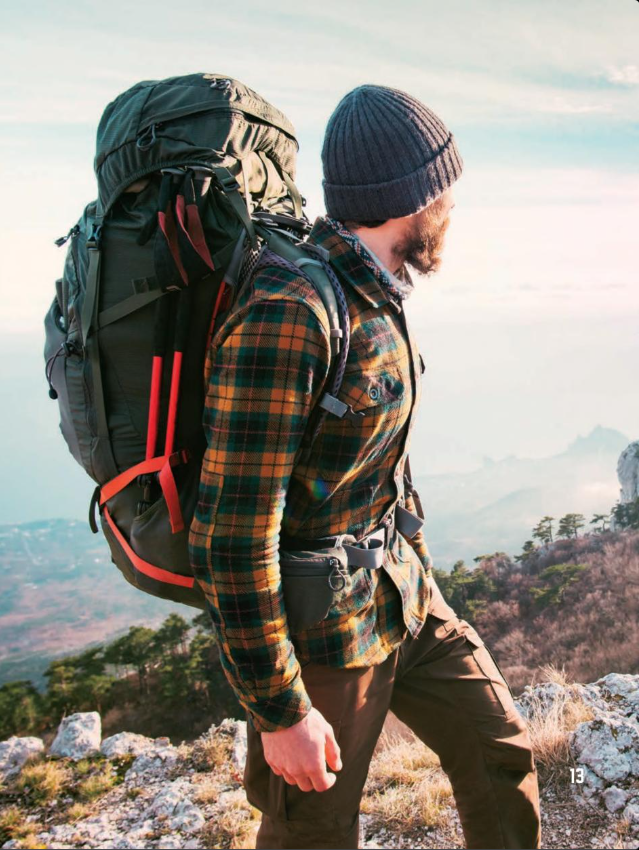Water is among the first concerns when determining a packing list. Just as it does when competing in other sports, the body needs plenty of water while hiking. As a person hikes, the body gets warmer. It gets rid of the excess heat by sweating. When the sweat evaporates, the body cools. Hikers need to replace that lost fluid or they risk dehydration. Dehydration occurs when people do not drink enough water. It can make them sick. And while soft drinks and other beverages might taste refreshing, they do not give the body the water it needs.
The American College of Sports Medicine says to drink at least 16 to 20 ounces (500 to 600 ml) of water one to two hours before an outdoor activity like hiking. While hiking, drink six to 12 ounces (180 to 360 ml) of water every 10 to 15 minutes. After hiking, hikers should drink another 16 to 24 ounces (500 to 800 ml) to replenish the body.
For most short day hikes, plenty of water and some healthy snacks are all a hiker needs. For longer hikes or overnight camping, meals are needed, too. This means choosing foods that are easy to carry and prepare and packing plates and cooking utensils. Hikers need to be able to prepare and cook food and then clean up. All this means that hikers need to do some smart meal planning before heading into the woods for longer trips.
Most granola bars are filled with the nutrients hikers need on the trail
OUCH! BRING THE FIRST AID KIT
Scrapes, cuts, bug bites, and blisters can be a real bummer on the trail. Sometimes hikers need a first aid kit. The kit doesn’t have to be large. Some hikers put together their own basic kits. Sporting goods stores also sell prepackaged kits.
There’s a lot to think about when deciding what to pack for a hike.
Hikers should carry safety gear in case something goes wrong on the hike. A whistle lets hikers call for help if they’re hurt or lost. And a whistle can help hikers who get separated find each other. The sound of a whistle carries farther than a person’s voice. Matches or a lighter helps a hiker start a fire, if needed. A headlamp or flashlight is handy, especially if a hiker will be in the woods as it starts to get dark. An emergency blanket also helps in case the weather suddenly turns cold or wet.
Many hikers carry a knife. It can be a simple, single-blade pocket knife. Some prefer more complex knives with tools such as a screwdriver, bottle opener, can opener, or scissors attached.
CARRYING THE LOAD
A backpack allows hikers to easily carry the supplies they need. When people first start to hike, any backpack they have could work. But people who plan to continue hiking would benefit from a backpack made for hiking. Hikers should shop for a backpack that fits them just right—not too large and not too small. Backpacks come in sizes to fit children, women, and men. Day packs are meant for short hikes. Bigger packs are available for longer hikes or overnight camping.
Hikers should pack wisely to avoid having to carry too much weight. For a day hike, the heaviest items in the backpack should be water and food. For short hikes, other items might be sunglasses, sunscreen, bug spray, a whistle, a pocket knife, a trash bag, a rain jacket, and a simple first aid kit.
Some backpacks are hydration backpacks. This means they carry the hiker’s water supply in a container that fits snugly inside the pack. This container is called a reservoir or bladder. It’s attached to a long, flexible straw that lets the hiker easily drink the water without stopping to reach inside the pack. These packs are very useful in hot summer weather.









